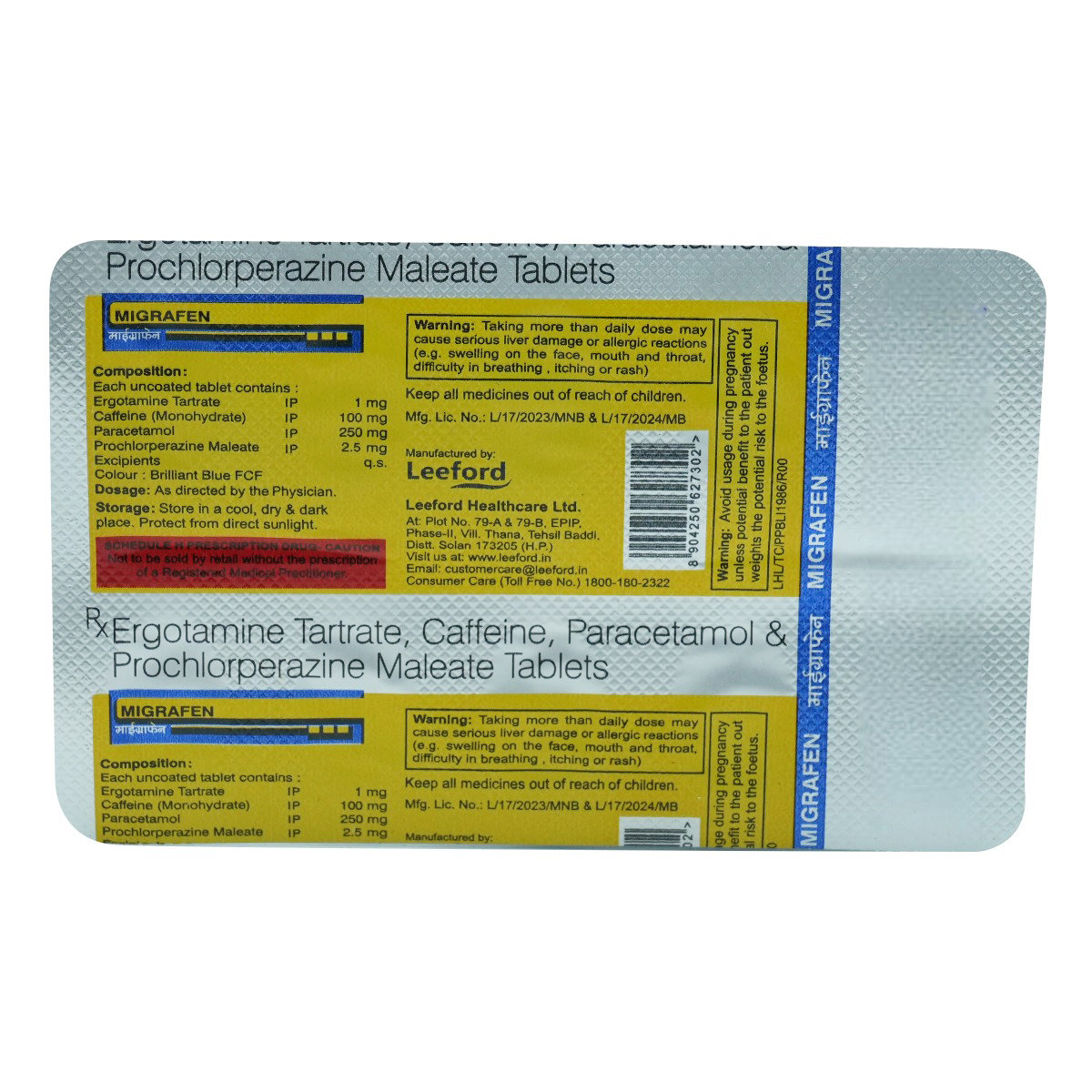Migrapac Tablet

MRP ₹76.5
(Inclusive of all Taxes)
₹11.5 Cashback (15%)
know your delivery time
Provide Delivery Location
Manufacturer/Marketer :
Consume Type :
Expires on or after :
Return Policy :

Secure Payment

Trusted by 8 Crore Indians

Genuine Products
Therapeutic Class
Country of origin
Manufacturer/Marketer address
Author Details
We provide you with authentic, trustworthy and relevant information
Disclaimer
Alcohol
Safe if prescribed
Avoid consumption of alcohol while taking Migrapac Tablet as it may cause increased drowsiness.
Pregnancy
Consult your doctor
Avoid taking Migrapac Tablet if you are pregnant or planning for pregnancy. Please consult your doctor if you are pregnant or if you have any concerns regarding this.
Breast Feeding
Consult your doctor
Migrapac Tablet may pass into breastmilk. Avoid taking Migrapac Tablet if you are breastfeeding.
Driving
Safe if prescribed
Migrapac Tablet may cause dizziness and drowsiness. Do not drive or operate machinery unless you are alert.
Liver
Consult your doctor
Dose adjustment may be needed in patients with liver impairment. Please consult your doctor if you have a liver impairment or any concerns regarding this.
Kidney
Consult your doctor
Dose adjustment may be needed in patients with kidney impairment. Please consult your doctor if you have kidney impairment or any concerns regarding this.
Children
Safe if prescribed
Migrapac Tablet should not be given to children as the safety and effectiveness were not established.
Product Substitutes
About Migrapac Tablet
Migrapac Tablet is a combination medicine indicated to treat and prevent migraine. Migrapac Tablet is used to relieve the symptoms at the first sign of a migraine attack and to prevent the worsening of the attack. Migraine is a neurological condition which is characterised by the intense pulsating, throbbing, pounding, debilitating headache which usually occurs on one side of the head; however, it can occur on both sides or shift.
Migrapac Tablet is a combination of four drugs, namely: Ergotamine (ergot alkaloid), caffeine (methylxanthine), prochlorperazine (anti-emetic) and paracetamol (analgesic). Ergotamine works by narrowing the blood vessels in the brain, and also affects the blood flow patterns associated with headache. Caffeine enhances the vasoconstrictive effect (narrowing of blood vessels). Prochlorperazine prevents nausea and vomiting associated with migraine by modifying the effects of neurotransmitters. Paracetamol blocks the release of prostaglandins that cause pain.
You are advised to take Migrapac Tablet for as long as your doctor has prescribed it for you depending on your medical condition. In some cases, you may experience certain common side-effects such as stomach upset, dizziness, dry mouth, constipation, and insomnia (trouble sleeping). Most of these side-effects do not require medical attention and will resolve gradually over time. However, you are advised to talk to your doctor if you experience these side-effects persistently.
Migrapac Tablet contains paracetamol, do not take other medicines containing paracetamol along with Migrapac Tablet unless prescribed. Do not take Migrapac Tablet if you are pregnant or breastfeeding. Migrapac Tablet may cause drowsiness and dizziness, so drive with caution. Migrapac Tablet should not be given to children as safety and efficacy have not been established. Avoid consuming alcohol with Migrapac Tablet as it could lead to increased drowsiness and dizziness. Keep your doctor informed about your health condition and medicines to rule out any side-effects/interactions.
Uses of Migrapac Tablet
Medicinal Benefits Mweb
Key Benefits
Migrapac Tablet is a combination of four drugs, namely: Ergotamine, caffeine, prochlorperazine, and paracetamol. Migrapac Tablet is indicated to treat and prevent migraine. Ergotamine is an ergot alkaloid that works by narrowing the blood vessels in the brain and also affects the blood flow patterns associated with headache. Caffeine is a methylxanthine that enhances the vasoconstrictive effect (narrowing of blood vessels). Prochlorperazine is an anti-emetic that prevents nausea and vomiting associated with migraine by modifying the effects of neurotransmitters. Paracetamol is an analgesic that blocks the release of prostaglandins that cause pain. Migrapac Tablet is used to relieve the symptoms at the first sign of a migraine attack and to prevent the worsening of the attack.
Directions for Use
Side Effects of Migrapac Tablet
- Stomach upset
- Dizziness
- Dry mouth
- Constipation
- Insomnia (trouble sleeping)
Drug Warnings
Do not take Migrapac Tablet if you are allergic to any of its contents; if you have/had heart problems, blood circulation problems or if you are taking antibiotics, anti-fungal, anti-HIV or other anti-migraine medicines. Migrapac Tablet , when taken along with antibiotics, anti-fungal, anti-HIV drugs, could lead to unpleasant side-effects such as poor blood flow to hands, feet, or brain. Migrapac Tablet contains paracetamol, do not take other medicines containing paracetamol along with Migrapac Tablet unless prescribed. Inform your doctor before taking Migrapac Tablet if you have/had high blood pressure, heart problems, high cholesterol, diabetes, asthma, liver and kidney problems. Do not take Migrapac Tablet if you are pregnant or breastfeeding. Migrapac Tablet may cause drowsiness and dizziness, so drive only if you are alert. Migrapac Tablet is not recommended for children as safety and effectiveness have not been established. Avoid consuming alcohol with Migrapac Tablet as it could lead to increased drowsiness. Do not take any other NSAIDs for pain relief along with Migrapac Tablet unless prescribed.
Drug-Drug Interactions Checker List
- CLARITHROMYCIN
- ERYTHROMYCIN
- TROLEANDOMYCIN
- ITRACONAZOLE
- KETOCONAZOLE
- INDINAVIR
- NELFINAVIR
- RITONAVIR
- OXYMETAZOLINE
- ACETAMINOPHEN
- FENTANYL
- BUTALBITAL
- FLUOXETINE
- DULOXETINE
- DIAZEPAM
- LORAZEPAM
- ALPRAZOLAM
- RANITIDINE
- DIPHENHYDRAMINE
- PREGABALIN
- METOPROLOL
- ALBUTEROL
- ONDANSETRON
Habit Forming
Diet & Lifestyle Advise
- Maintain a healthy diet and exercise regularly as it helps in improving overall health and boosts self-esteem.
- Avoid bright lights, loud noise, and extreme temperatures.
- Perform meditation and yoga. This helps in relieving stress and provides relaxation.
- Follow a regular sleep pattern to improve the amount and quality of sleep you get.
- Massage your scalp to ease the pain.
- Lie down in a quiet, dark room.
- Avoid smoking, alcohol, and caffeinated drinks.
- Learn what triggers your migraine and try avoiding them.
- Stay hydrated. Drink plenty of fluids.
- Learn relaxation skills as they help in reducing stress.
All Substitutes & Brand Comparisons
RX
Out of StockNot for online saleNeuromol Plus Tablet
₹28
(₹2.52 per unit)
63% CHEAPERRX
Nt Grain Tablet 10's
Intas Pharmaceuticals Ltd
₹53
(₹4.77 per unit)
30% CHEAPERRX
Out of StockLivigrain Tablet 10's
Lividus Pharmaceuticals Pvt Ltd
₹60
(₹5.4 per unit)
21% CHEAPER
Buy best C.n.s Drugs products by
Intas Pharmaceuticals Ltd
Sun Pharmaceutical Industries Ltd
Torrent Pharmaceuticals Ltd
Alkem Laboratories Ltd
Abbott India Ltd
Cipla Ltd
Alteus Biogenics Pvt Ltd
Micro Labs Ltd
Lupin Ltd
Ipca Laboratories Ltd
D D Pharmaceuticals Pvt Ltd
Icon Life Sciences
Mankind Pharma Pvt Ltd
Tripada Healthcare Pvt Ltd
Arinna Lifesciences Ltd
Linux Laboratories Pvt Ltd
East West Pharma India Pvt Ltd
La Renon Healthcare Pvt Ltd
Talent India Pvt Ltd
Tas Med India Pvt Ltd
Zydus Healthcare Ltd
Cnx Health Care Pvt Ltd
Eris Life Sciences Ltd
Leeford Healthcare Ltd
Emcure Pharmaceuticals Ltd
Macleods Pharmaceuticals Ltd
Sigmund Promedica
Aristo Pharmaceuticals Pvt Ltd
Dr Reddy's Laboratories Ltd
Troikaa Pharmaceuticals Ltd
Consern Pharma Ltd
Zydus Cadila
Shine Pharmaceuticals Ltd
Wockhardt Ltd
Ardent Life Sciences Pvt Ltd
Crescent Formulations Pvt Ltd
Theo Pharma Pvt Ltd
Reliance Formulation Pvt Ltd
Ikon Pharmaceuticals Pvt Ltd
Propel Healthcare
Neon Laboratories Ltd
Jagsam Pharma
Msn Laboratories Pvt Ltd
Morepen Laboratories Ltd
Pulse Pharmaceuticals
Sanofi India Ltd
Med Manor Organics Pvt Ltd
Hetero Healthcare Pvt Ltd
Novartis India Ltd
Crescent Therapeutics Ltd
Elder Pharmaceuticals Ltd
Solvate Laboratories Pvt Ltd
Akumentis Healthcare Ltd
Mova Pharmaceutical Pvt Ltd
Psyco Remedies Ltd
Tripada Lifecare Pvt Ltd
Ajanta Pharma Ltd
Cyrus Remedies Pvt Ltd
Medishri Healthcare Pvt Ltd
Cadila Healthcare Ltd
Glenmark Pharmaceuticals Ltd
Matteo Health Care Pvt Ltd
Hbc Life Sciences Pvt Ltd
Lyf Healthcare
Matias Healthcare Pvt Ltd
Mesmer Pharmaceuticals
Alembic Pharmaceuticals Ltd
Capital Pharma
Crescent Pharmaceuticals
Medopharm Pvt Ltd
Alniche Life Sciences Pvt Ltd
Kivi Labs Ltd
Talin Remedies Pvt Ltd
USV Pvt Ltd
Quince Lifesciences Pvt Ltd
Solis Pharmaceuticals
Infivis Life Care
Zuventus Healthcare Ltd
Cadila Pharmaceuticals Ltd
Pfizer Ltd
Wallace Pharmaceuticals Pvt Ltd
A N Pharmacia Laboratories Pvt Ltd
Blue Cross Laboratories Pvt Ltd
Jenburkt Pharmaceuticals Ltd
Lia Life Sciences Pvt Ltd
Mano Pharma
Medley Pharmaceuticals Ltd
Primus Remedies Pvt Ltd
FDC Ltd
Maneesh Pharmaceuticals Ltd
Apex Laboratories Pvt Ltd
Gagnant Healthcare Pvt Ltd
Ozone Pharmaceuticals Ltd
RPG Life Sciences Ltd
Strides Shasun Ltd
Unichem International
GlaxoSmithKline Pharmaceuticals Ltd
Kuresys Labs Pvt Ltd
LA Pharma
Trion Pharma India Llp

_0.jpg?tr=q-85)





